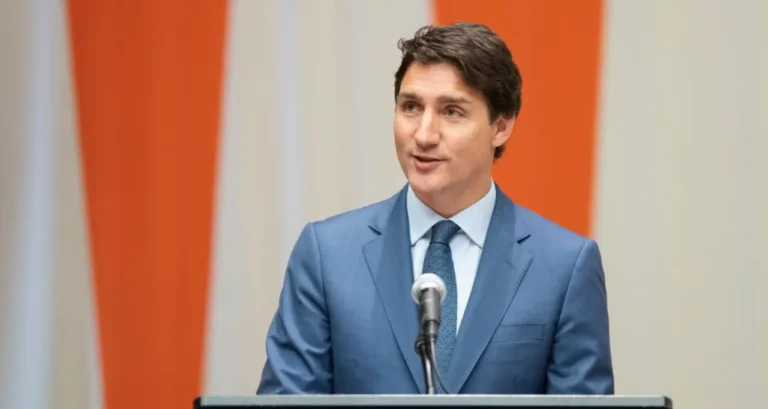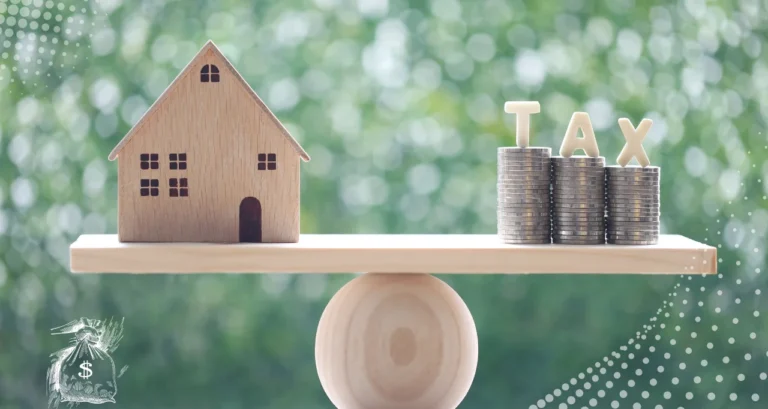Do Health Care Workers Qualify for Student Loan Forgiveness?
As student debt continues to impact millions across the United States, healthcare workers are among those looking for relief options. Healthcare professionals, who play a crucial role in public health, have several pathways to qualify for student loan forgiveness. Whether you’re a nurse, doctor, or medical technician, there may be options to help you manage your student loans effectively.
What is Student Loan Forgiveness?
Student loan forgiveness is a program that cancels some or all of a borrower’s loan balance under certain conditions. In most cases, it’s offered to individuals in public service, such as healthcare, education, and the military. The forgiveness process can be challenging to navigate, but healthcare workers may find support through specific programs aimed at reducing their financial burden.
Why Are Healthcare Workers Eligible for Loan Forgiveness?
Healthcare workers are eligible for student loan forgiveness because of their essential role in supporting community health and well-being. Many forgiveness programs are designed to incentivize and reward public service roles, particularly in underserved areas. Given the high demand for qualified healthcare workers, loan forgiveness programs aim to attract and retain these professionals in critical roles.
What Types of Loan Forgiveness Programs Are Available for Healthcare Workers?
There are several forgiveness programs healthcare workers can apply for, including:
1. Public Service Loan Forgiveness (PSLF)
The PSLF program forgives the remaining balance on Direct Loans after making 120 qualifying monthly payments under a qualifying repayment plan while working full-time for a qualifying employer. Healthcare workers in public hospitals, nonprofit clinics, or health departments typically qualify if they meet the criteria.
Eligibility Requirements:
- Work full-time for a government or qualifying nonprofit employer
- Make 120 qualifying payments on a Direct Loan under an income-driven repayment plan
2. National Health Service Corps (NHSC) Loan Repayment Program
The NHSC program provides loan repayment assistance to licensed healthcare providers who work in Health Professional Shortage Areas (HPSAs). This program is especially relevant for healthcare professionals willing to work in underserved areas for a specified period.
Eligibility Requirements:
- Must be a licensed primary care medical, dental, or mental health provider
- Work at an NHSC-approved site in a high-need HPSA
- Commitment to at least two years of full-time service
3. Nurse Corps Loan Repayment Program
This program assists registered nurses, advanced practice registered nurses, and nurse faculty. Nurses can receive up to 60% of their outstanding student loan balance if they work for two years in a critical shortage area.
Eligibility Requirements:
- Licensed as a registered nurse or nurse faculty
- Commit to working in a critical shortage facility
- Commitment of at least two years of service
4. State-Based Loan Forgiveness Programs
Many states have their own loan forgiveness programs for healthcare workers, often targeting specific roles like nurses, mental health professionals, or primary care physicians. These programs vary by state but typically require work in underserved areas or specific healthcare fields.
Examples by State:
- California: CalHealthCares Loan Repayment Program for physicians and dentists
- Texas: Physician Education Loan Repayment Program for doctors working in health shortage areas
- New York: Doctors Across New York Loan Repayment for physicians in rural or underserved communities
How Do Health Care Workers Qualify for PSLF?
The Public Service Loan Forgiveness (PSLF) program offers an excellent option for healthcare professionals. To qualify, healthcare workers must:
- Have a Direct Loan: Only Direct Loans are eligible. If you have other federal loans, consider consolidating them into a Direct Consolidation Loan.
- Work for a Qualified Employer: This includes government organizations, nonprofit hospitals, and clinics.
- Make 120 Qualifying Payments: Payments must be made under an income-driven repayment plan, which caps payments based on your income.
What Are the Steps to Apply for Student Loan Forgiveness?
Here’s a step-by-step guide to applying for student loan forgiveness:
- Confirm Your Eligibility: Ensure that you meet the program’s requirements, such as working in a qualified healthcare position and employer.
- Enroll in a Qualifying Repayment Plan: Most programs require you to be on an income-driven repayment plan, such as Income-Based Repayment (IBR) or Pay As You Earn (PAYE).
- Track Your Payments: Make the necessary number of qualifying payments (e.g., 120 for PSLF).
- Submit Certification Forms: For PSLF, submit an Employment Certification Form annually or whenever you change jobs.
- Apply for Forgiveness: After meeting all program requirements, submit the loan forgiveness application.
Are Private Loans Eligible for Forgiveness Programs?
No, most federal forgiveness programs do not cover private loans. However, some state-based programs may offer assistance for private loans. Contact your loan servicer to discuss options, such as refinancing to potentially lower interest rates.
Do Medical Students Have Access to Additional Forgiveness Options?
Medical students may also have access to additional loan repayment programs tailored for physicians. Here are two popular ones:
- National Institutes of Health (NIH) Loan Repayment Programs: These programs help repay loans for health professionals who commit to research careers. NIH offers up to $50,000 in loan repayment for qualifying individuals.
- Indian Health Service (IHS) Loan Repayment Program: The IHS program assists healthcare workers who work in American Indian and Alaska Native communities. Qualified health professionals may receive up to $40,000 toward their student loans for two years of service.
What Are Some Strategies to Reduce Student Loan Debt?
In addition to loan forgiveness, healthcare workers can explore these strategies to manage and reduce student debt:
- Income-Driven Repayment Plans: Reduce monthly payments based on income.
- Employer-Based Assistance: Some hospitals and healthcare facilities offer loan repayment assistance to retain talented employees.
- Refinancing Loans: Refinancing can help lower interest rates on private loans but will make federal loans ineligible for forgiveness.
Does Student Loan Forgiveness Impact Taxes?
Student loan forgiveness can impact taxes, depending on the program. For example, loans forgiven through PSLF are not considered taxable income. However, forgiveness under income-driven repayment plans may be taxable after the loan term. Consult a tax professional to understand the potential tax implications of loan forgiveness.
How Does Student Loan Forgiveness Benefit Healthcare Workers?
Student loan forgiveness programs help healthcare workers by:
- Reducing financial stress from educational debt
- Making it easier to work in high-need areas
- Supporting long-term career stability and financial growth
Loan forgiveness helps healthcare professionals focus on their careers, advancing public health while easing the burden of educational debt.
Conclusion
Healthcare workers play a vital role in society, often facing significant educational debt in pursuit of their careers. Loan forgiveness programs offer crucial financial relief, allowing professionals to dedicate themselves to public service without the overwhelming burden of student loans. By exploring programs like PSLF, NHSC, and state-specific options, healthcare workers can find ways to achieve financial security while making a difference in their communities.
FAQs
Do healthcare workers qualify for Public Service Loan Forgiveness (PSLF)?
Yes, healthcare workers employed by government or nonprofit organizations, such as public hospitals or health clinics, may qualify for PSLF. They must work full-time, have a Direct Loan, and make 120 qualifying payments under an income-driven repayment plan.
What is the Nurse Corps Loan Repayment Program?
The Nurse Corps Loan Repayment Program provides loan repayment assistance to registered nurses, nurse practitioners, and nurse faculty who commit to working in critical shortage facilities. Eligible nurses can receive up to 60% of their unpaid loan balance for two years of service, with an option for an additional year for extra support.
Can private loans be forgiven through these programs?
Most federal student loan forgiveness programs, including PSLF and the NHSC, apply only to federal student loans. Private loans are generally not eligible. However, some state programs might offer assistance for private loans in specific cases.
Do I have to work in an underserved area to qualify for loan forgiveness?
Many programs, such as the National Health Service Corps (NHSC) Loan Repayment Program and certain state-based programs, require healthcare professionals to work in designated Health Professional Shortage Areas (HPSAs) or critical shortage facilities. However, PSLF does not require employment in an underserved area, only in a public service role.
How long does it take to qualify for Public Service Loan Forgiveness?
PSLF requires 10 years of qualifying full-time employment and 120 qualifying monthly payments under an income-driven repayment plan. After meeting these requirements, healthcare workers can apply to have their remaining loan balance forgiven.
What types of healthcare workers are eligible for loan forgiveness?
Various types of healthcare professionals can be eligible, including doctors, nurses, physician assistants, dentists, mental health professionals, and other licensed healthcare providers. The specific eligibility depends on the program requirements, such as the Nurse Corps Loan Repayment Program or NHSC.
Is there a limit on the amount of student loan forgiveness available to healthcare workers?
The amount forgiven varies by program. For example:
PSLF forgives the entire remaining balance after 120 qualifying payments.
The NHSC and Nurse Corps programs offer up to $50,000 or more in loan forgiveness depending on the length of service and location.
Do healthcare workers in private practice qualify for loan forgiveness?
Typically, healthcare workers in private practice do not qualify for most federal loan forgiveness programs. Exceptions may exist if they work in nonprofit or government-supported clinics. Some state programs may provide assistance to private practitioners in underserved areas.
Can part-time healthcare workers qualify for student loan forgiveness?
PSLF requires full-time employment, defined as 30 hours or more per week. However, some loan repayment programs, like NHSC, have options for part-time service, though the benefits may be prorated.
How do I apply for student loan forgiveness if I’m a healthcare worker?
To apply, start by confirming your loan and employment eligibility. Then, submit annual employment certification forms for PSLF, or apply directly through your program’s official site (e.g., NHSC or Nurse Corps) with all required documentation.
Are medical residents eligible for student loan forgiveness?
Medical residents working in qualifying nonprofit or public hospitals may be eligible for PSLF if they make qualifying payments on a Direct Loan during their residency. However, they must also meet the program’s full-time employment criteria.
Is loan forgiveness for healthcare workers taxable?
Under PSLF and NHSC programs, the amount forgiven is not considered taxable income. However, state-based programs may have different tax implications, so check with your state’s program guidelines.
Can student loan forgiveness be revoked if I switch jobs?
To maintain PSLF eligibility, you must continue working in a qualifying public service role. Switching to a non-qualifying employer (such as a private practice) before reaching 120 payments could disqualify you from PSLF, though other programs may vary.
What options are available if I don’t qualify for these programs?
If you don’t qualify for federal forgiveness programs, consider income-driven repayment plans to lower monthly payments or look into refinancing options with private lenders, which may reduce your interest rate and repayment burden.







